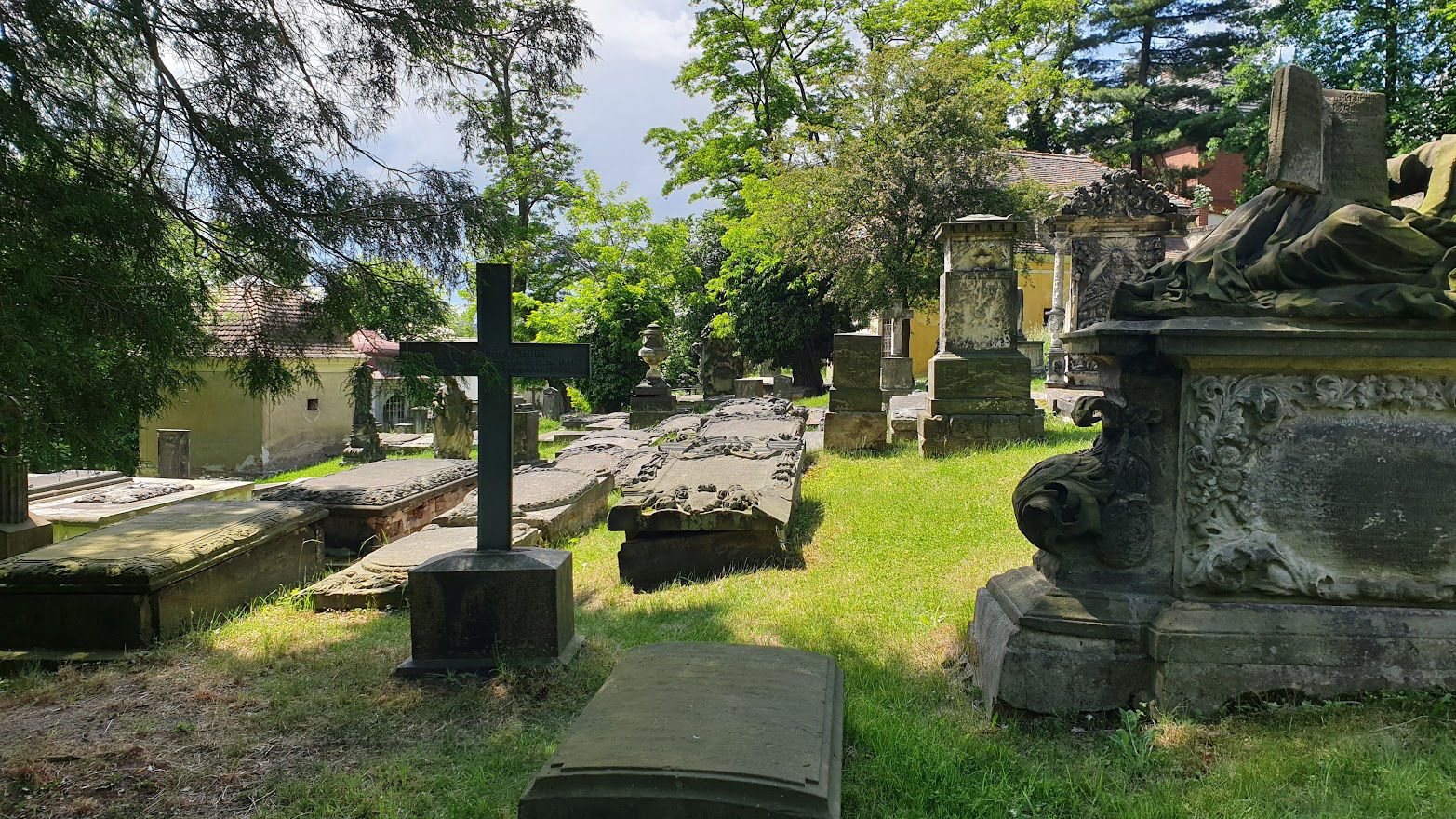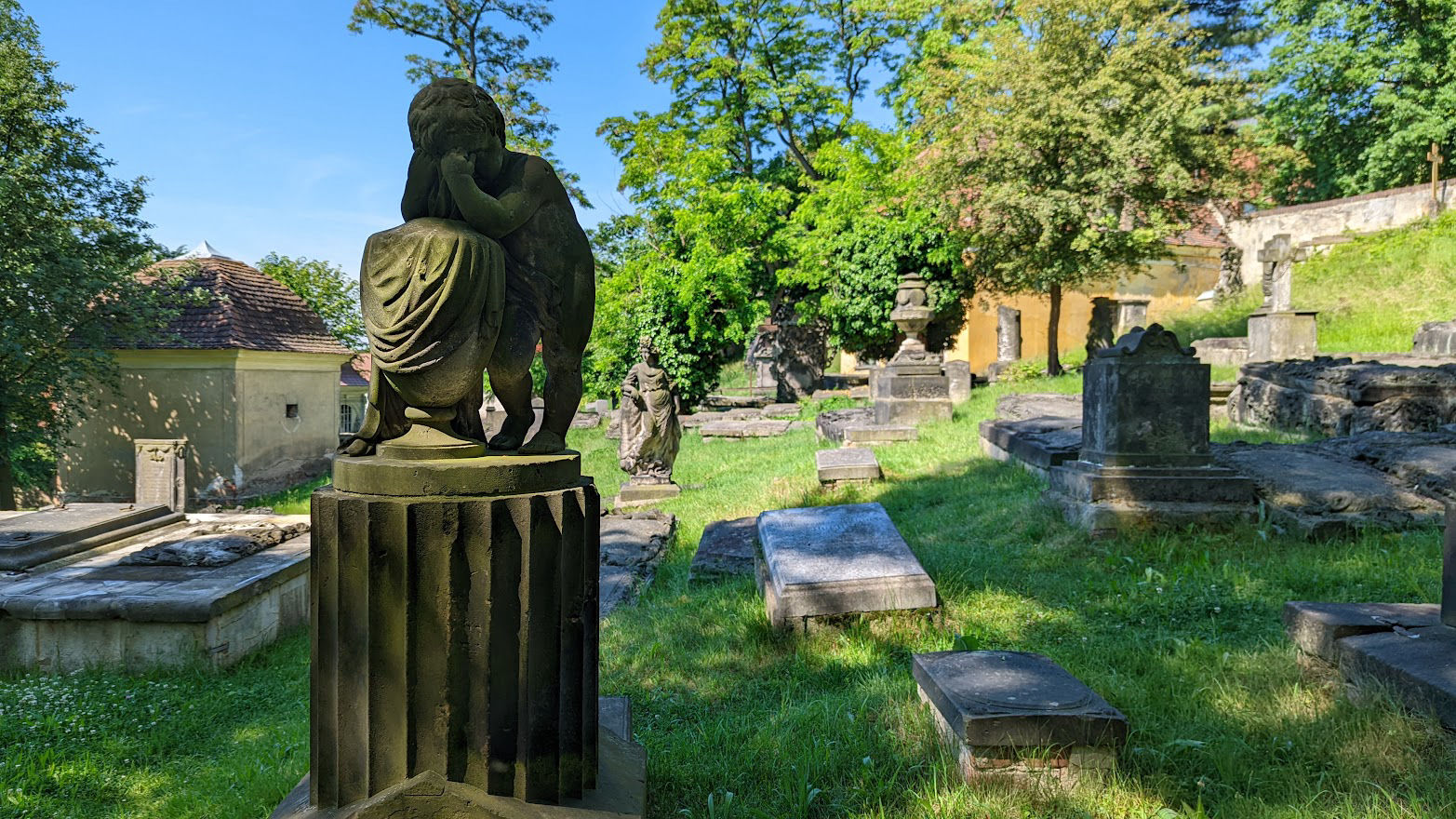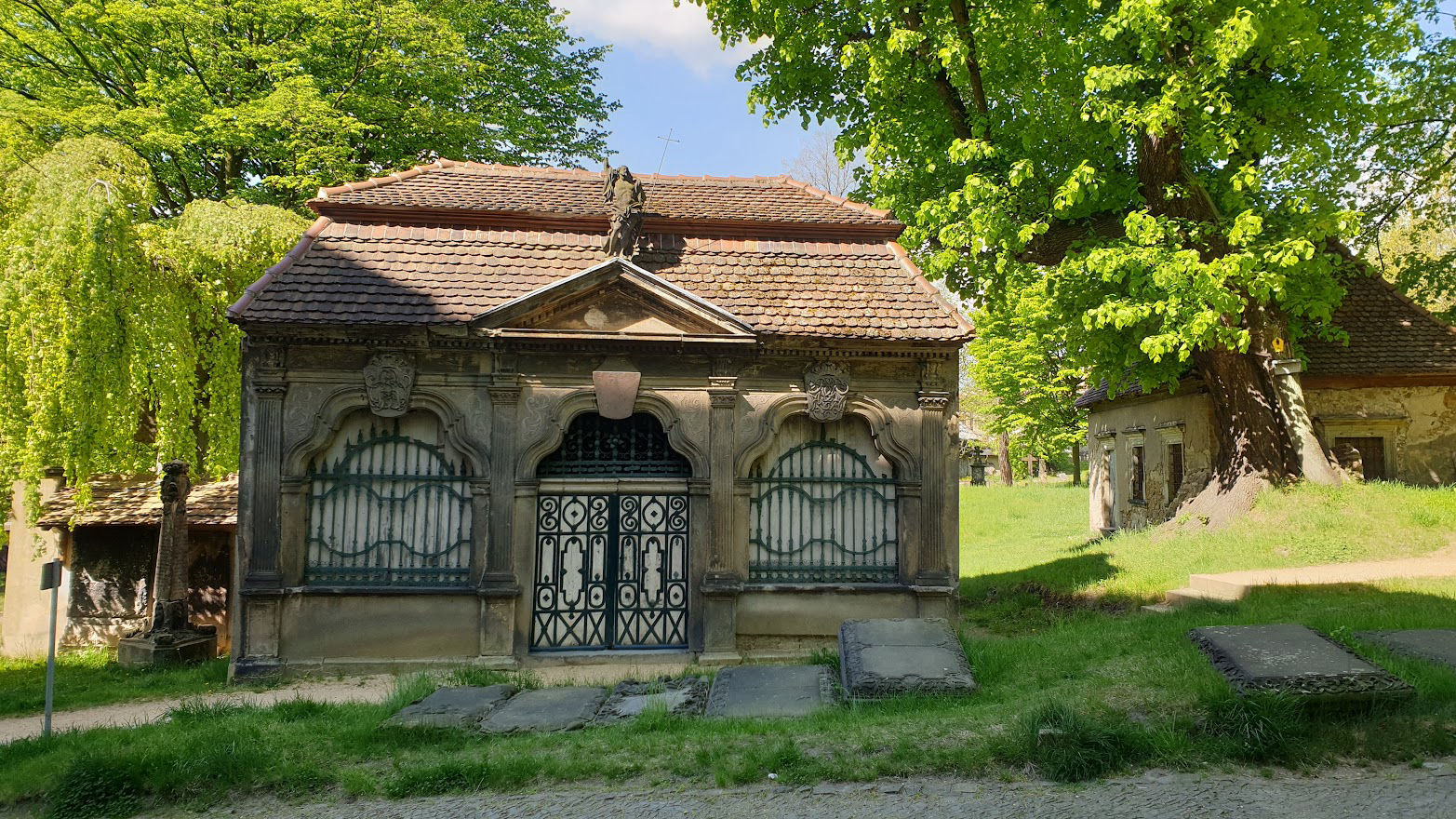Nikolai Cemetery

Probably already built in the 12th century and first mentioned around 1305, the Nikolai Cemetery remained the largest and most important burial place of Görlitz until the middle of the 19th century. With the opening of the municipal cemetery in 1847, burials were only carried out there in exceptional cases. However, since the Graveyard remained largely intact with its tomb and building substance after its closure, it is an extremely rare and eloquent testimony to the urban Sepulchral culture of the period from 1600 to 1850.

More than 800 gravestones and epitaphs reflect the stylistic change from Mannerism through Baroque to Classicism, Romanticism and Historicism. They bear witness to the changing religiousness and the hope for the future of a wealthy Görlitz middle class, but also to their will to present themselves and represent themselves beyond death. Especially the baroque tombstones and memorial stones challenge the viewer with allegories and emblems, often also with their inscription to reflect on the transience of life and the transience of everything earthly. They thus reflect the world experience of many contemporaries at the time.

Not least because of its large stock of crypt houses, the Nikolai Cemetery is one of the outstanding cemetery monuments. They were erected from the early 17th to the middle of the 18th century. In addition to magnificent tombs, decorative paintings from the time of their construction are still preserved in some of the crypts.
Free AI Website Maker